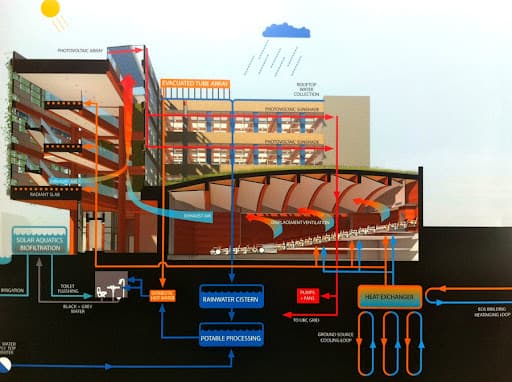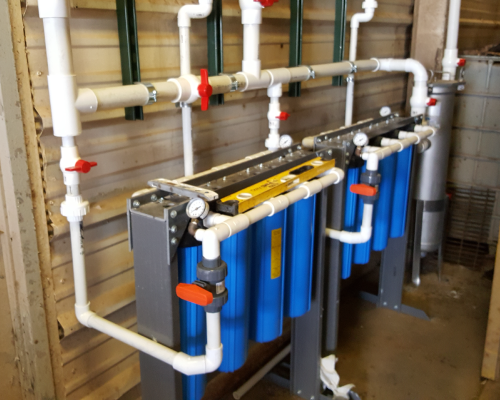The Basics of Your House's Plumbing System Anatomy
The Basics of Your House's Plumbing System Anatomy
Blog Article
What're your opinions on The Inner Workings of Your Home's Plumbing?

Recognizing just how your home's pipes system functions is vital for each homeowner. From delivering tidy water for drinking, cooking, and showering to safely getting rid of wastewater, a well-kept plumbing system is critical for your household's health and wellness and convenience. In this detailed guide, we'll discover the elaborate network that makes up your home's pipes and offer pointers on upkeep, upgrades, and dealing with usual problems.
Introduction
Your home's pipes system is more than simply a network of pipes; it's an intricate system that ensures you have accessibility to clean water and reliable wastewater removal. Recognizing its elements and how they collaborate can help you avoid expensive repairs and make certain whatever runs efficiently.
Fundamental Elements of a Plumbing System
Pipelines and Tubes
At the heart of your plumbing system are the pipelines and tubing that lug water throughout your home. These can be made from numerous materials such as copper, PVC, or PEX, each with its benefits in terms of toughness and cost-effectiveness.
Components: Sinks, Toilets, Showers, etc.
Components like sinks, toilets, showers, and tubs are where water is used in your house. Recognizing exactly how these components attach to the plumbing system assists in detecting issues and intending upgrades.
Valves and Shut-off Factors
Shutoffs control the flow of water in your plumbing system. Shut-off shutoffs are crucial during emergency situations or when you need to make repair services, permitting you to isolate parts of the system without disrupting water circulation to the whole house.
Water System System
Key Water Line
The main water line links your home to the metropolitan supply of water or a personal well. It's where water enters your home and is distributed to numerous fixtures.
Water Meter and Pressure Regulatory Authority
The water meter actions your water usage, while a pressure regulatory authority makes certain that water moves at a secure pressure throughout your home's plumbing system, stopping damages to pipes and fixtures.
Cold Water vs. Hot Water Lines
Recognizing the difference between cold water lines, which supply water directly from the primary, and warm water lines, which lug heated water from the water heater, assists in repairing and planning for upgrades.
Drain System
Drain Pipes Piping and Traps
Drain pipes carry wastewater away from sinks, showers, and toilets to the drain or sewage-disposal tank. Catches protect against sewer gases from entering your home and also trap debris that might cause blockages.
Ventilation Pipelines
Air flow pipelines permit air right into the water drainage system, protecting against suction that could slow water drainage and create catches to vacant. Correct air flow is essential for keeping the honesty of your pipes system.
Relevance of Correct Water Drainage
Making certain appropriate drain stops back-ups and water damages. Consistently cleaning up drains pipes and maintaining traps can prevent pricey fixings and expand the life of your pipes system.
Water Heater
Kinds Of Hot Water Heater
Water heaters can be tankless or standard tank-style. Tankless heating units warm water on demand, while tanks save warmed water for prompt usage.
Upgrading Your Plumbing System
Reasons for Updating
Updating to water-efficient components or replacing old pipes can boost water top quality, minimize water expenses, and enhance the value of your home.
Modern Pipes Technologies and Their Advantages
Check out innovations like smart leakage detectors, water-saving commodes, and energy-efficient hot water heater that can save cash and decrease environmental effect.
Cost Factors To Consider and ROI
Determine the ahead of time expenses versus long-term financial savings when taking into consideration pipes upgrades. Numerous upgrades pay for themselves via minimized utility costs and less repair work.
How Water Heaters Attach to the Plumbing System
Understanding just how water heaters connect to both the cold water supply and warm water distribution lines aids in diagnosing concerns like inadequate hot water or leakages.
Maintenance Tips for Water Heaters
Regularly purging your water heater to remove debris, examining the temperature setups, and checking for leaks can prolong its lifespan and boost energy performance.
Typical Pipes Issues
Leakages and Their Causes
Leakages can occur as a result of aging pipelines, loose installations, or high water pressure. Resolving leaks without delay avoids water damages and mold growth.
Obstructions and Blockages
Obstructions in drains and commodes are frequently brought on by flushing non-flushable products or a buildup of oil and hair. Making use of drain displays and being mindful of what decreases your drains can avoid obstructions.
Signs of Plumbing Troubles to Watch For
Low water stress, slow-moving drains, foul odors, or abnormally high water bills are indications of possible plumbing issues that need to be addressed promptly.
Plumbing Maintenance Tips
Regular Evaluations and Checks
Arrange yearly pipes examinations to capture issues early. Look for indications of leaks, rust, or mineral accumulation in taps and showerheads.
Do It Yourself Upkeep Tasks
Straightforward jobs like cleansing tap aerators, checking for toilet leakages making use of color tablets, or protecting revealed pipelines in cold climates can avoid major plumbing problems.
When to Call a Specialist Plumber
Know when a plumbing problem needs specialist expertise. Trying complex repair work without appropriate understanding can bring about even more damages and higher repair work expenses.
Tips for Minimizing Water Use
Basic behaviors like dealing with leaks promptly, taking much shorter showers, and running complete lots of washing and recipes can conserve water and lower your utility bills.
Eco-Friendly Plumbing Options
Think about lasting pipes products like bamboo for floor covering, which is durable and green, or recycled glass for kitchen counters.
Emergency situation Readiness
Actions to Take Throughout a Plumbing Emergency
Know where your shut-off valves are located and how to turn off the supply of water in case of a burst pipe or major leakage.
Relevance of Having Emergency Situation Calls Convenient
Maintain call info for regional plumbing technicians or emergency services readily available for fast feedback throughout a pipes dilemma.
Environmental Impact and Conservation
Water-Saving Components and Devices
Setting up low-flow faucets, showerheads, and toilets can significantly reduce water use without giving up performance.
DIY Emergency Situation Fixes (When Appropriate).
Short-term fixes like making use of air duct tape to patch a leaking pipeline or putting a container under a dripping tap can reduce damages up until a specialist plumbing technician gets here.
Final thought.
Understanding the composition of your home's plumbing system equips you to maintain it properly, saving money and time on repairs. By complying with regular upkeep regimens and staying notified about modern-day plumbing technologies, you can guarantee your plumbing system runs effectively for several years to find.
Understanding Your Home Plumbing System: A Comprehensive Guide
Plumbing System: The Lifeline of Your Home
At its core, the plumbing system is designed to perform two primary functions: bring fresh water into your home and remove wastewater. The system is a network of pipes, fixtures, and other components that transport water and sewage. Residential plumbing systems include potable water supply lines, drain-waste-vent (DWV) systems, and various plumbing fixtures that make water use in daily tasks possible.
Key Components:
Water Supply: This part of your plumbing system brings municipal water into your home, passing through the main water supply line. It s responsible for supplying all water needs, from drinking to bathing.
Drainage System: It carries waste and water away from your home to the sewer or septic system. This system includes all the piping within your home that leads to external sewage or septic systems.
Vent System: An essential yet often overlooked component, the vent system allows sewer gases to escape and lets air into the drainpipes, ensuring water and waste move correctly through the system.
Fixture: More Than Just Taps and Toilets
Plumbing fixtures are the most interactive parts of the plumbing system, including faucets, showers, toilets, and sinks. Each fixture is connected to the plumbing system and plays a role in either the delivery of freshwater or the disposal of waste and wastewater.
Types of Fixtures:
Faucets and Sinks: Used for washing hands, dishes, and other daily water needs. Toilets: Dispose of human waste through the sewage system. Bathtubs and Showers: Provide bathing facilities, requiring both hot and cold water supply. Water Supply: The Source of Life
The water supply system is a critical component, ensuring that potable water is available throughout your home for various uses, including drinking, cooking, and cleaning. This system consists of pipes that distribute water to different parts of the house, controlled by valves to regulate the water flow.
Types of Plumbing: Materials and Methods
Various types of plumbing systems and materials are used in residential settings, each with its advantages and applications. From copper and PVC pipes for water supply to cast iron and ABS for drainage, the choice of materials can impact the longevity and efficiency of your plumbing system.
https://intownplumbingtx.com/articles/home-plumbing-system-guide/

Do you really like more info about Anatomy of a House: Understanding the Components? Create a remark below. We will be glad to listen to your responses about this content. We are looking forward that you visit us again soon. Are you aware of another individual who is fascinated with Understanding Your Home's Plumbing Anatomy? Be sure promote it. I recognize the value of your readership.
Schedule Your Job Now Report this page